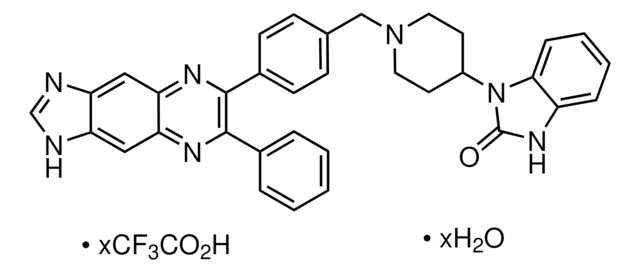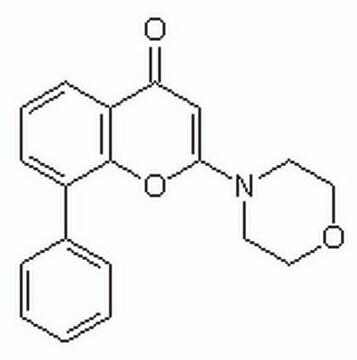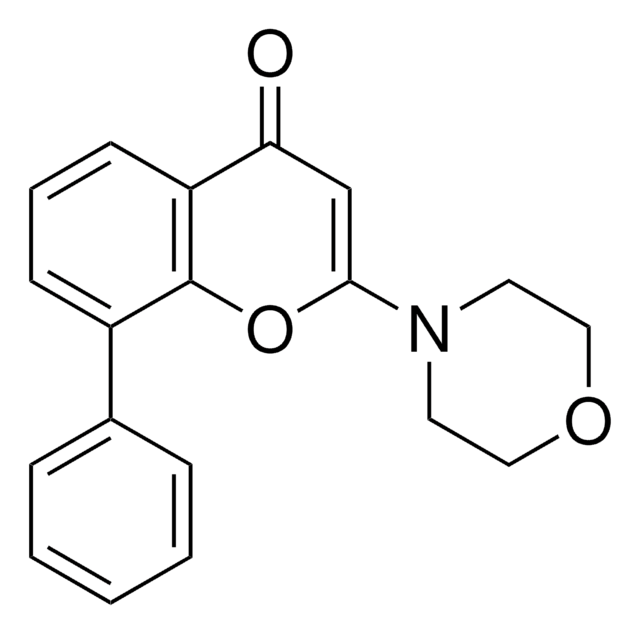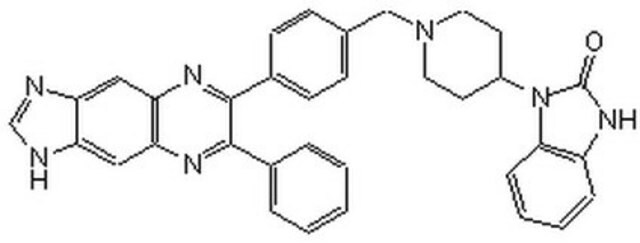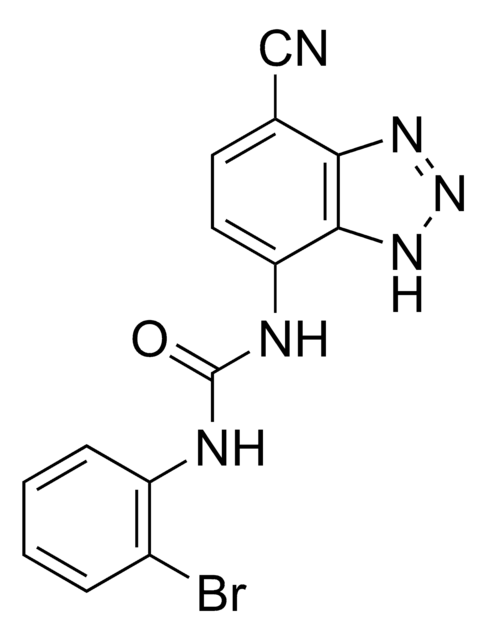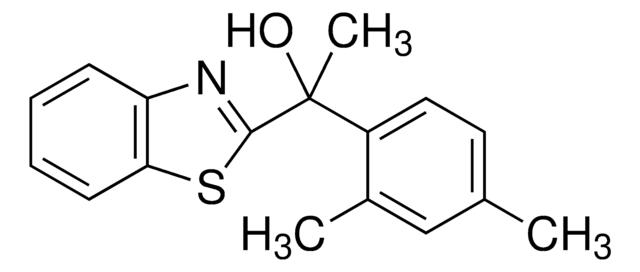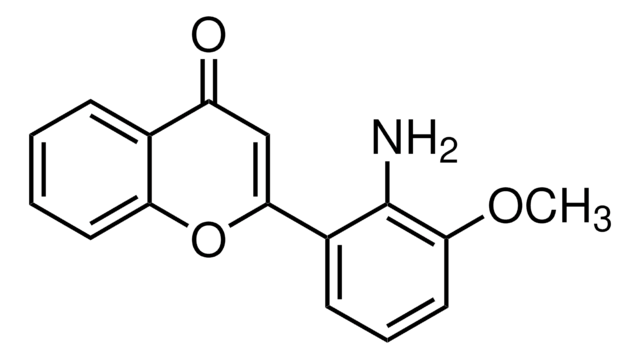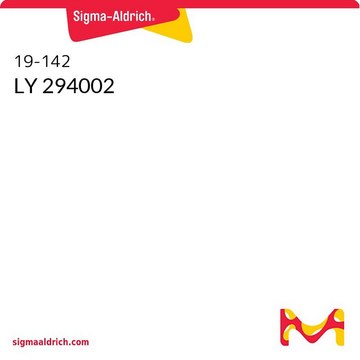124011
Akt Inhibitor IV
The Akt Inhibitor IV, also referenced under CAS 681281-88-9, controls the biological activity of Akt. This small molecule/inhibitor is primarily used for Phosphorylation & Dephosphorylation applications.
Synonim(y):
Akt Inhibitor IV
About This Item
Polecane produkty
Poziom jakości
Próba
≥98% (HPLC)
Formularz
solid
producent / nazwa handlowa
Calbiochem®
warunki przechowywania
OK to freeze
desiccated (hygroscopic)
protect from light
kolor
yellow
rozpuszczalność
DMSO: 5 mg/mL
Warunki transportu
ambient
temp. przechowywania
2-8°C
InChI
1S/C31H27N4S.HI/c1-3-34-28-22-23(31-32-26-16-10-11-17-29(26)36-31)18-19-27(28)35(25-14-8-5-9-15-25)30(34)20-21-33(2)24-12-6-4-7-13-24;/h4-22H,3H2,1-2H3;1H/q+1;/p-1
Klucz InChI
NAYRELMNTQSBIN-UHFFFAOYSA-M
Opis ogólny
Działania biochem./fizjol.
Akt
Opakowanie
Ostrzeżenie
Rekonstytucja
Inne uwagi
Selected Citations
Lee, J., et al. 2009. Cell Stem Cell5, 76.
Informacje prawne
Kod klasy składowania
11 - Combustible Solids
Klasa zagrożenia wodnego (WGK)
WGK 3
Temperatura zapłonu (°F)
Not applicable
Temperatura zapłonu (°C)
Not applicable
Certyfikaty analizy (CoA)
Poszukaj Certyfikaty analizy (CoA), wpisując numer partii/serii produktów. Numery serii i partii można znaleźć na etykiecie produktu po słowach „seria” lub „partia”.
Masz już ten produkt?
Dokumenty związane z niedawno zakupionymi produktami zostały zamieszczone w Bibliotece dokumentów.
Klienci oglądali również te produkty
Produkty
AldeRed™ 588-A is a red fluorescent live cell probe that detects ALDH activity used to identify cancer stem cells and progenitor cells in culture. Cancer stem cells (CSCs) are subpopulations of cancer cells that can self-renew, generate diverse cells in the tumor mass, and sustain tumorigenesis. Some researchers believe that cancer arises from cancer stem cells that originate as a result of mutational hits on normal stem cells.
AldeRed™ 588-A wykrywa aktywność ALDH w nowotworowych komórkach macierzystych, pomagając w badaniach nad rakiem.
Nasz zespół naukowców ma doświadczenie we wszystkich obszarach badań, w tym w naukach przyrodniczych, materiałoznawstwie, syntezie chemicznej, chromatografii, analityce i wielu innych dziedzinach.
Skontaktuj się z zespołem ds. pomocy technicznej